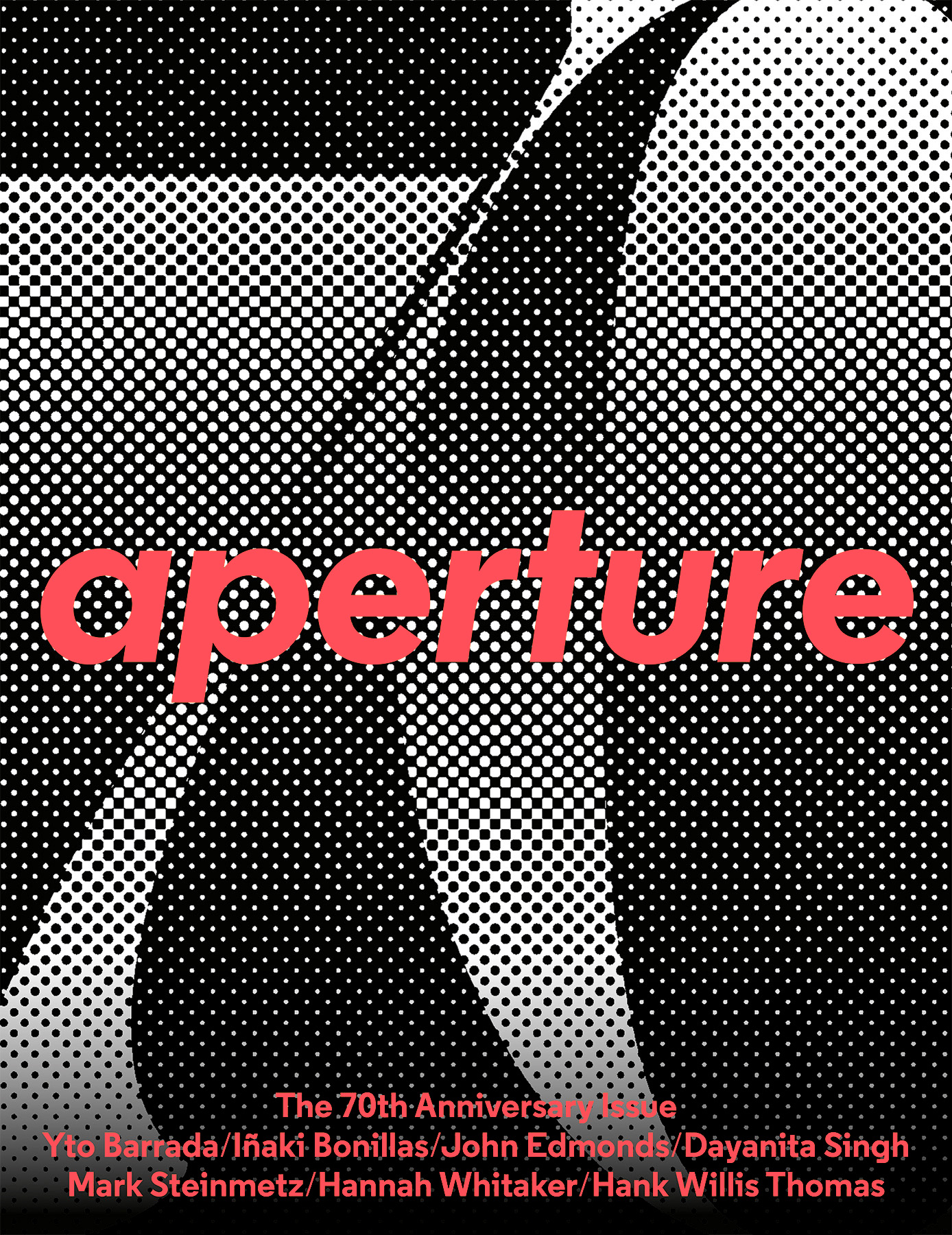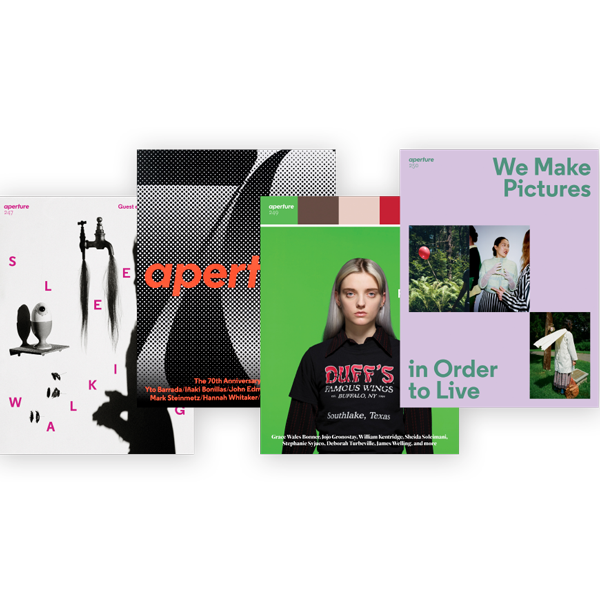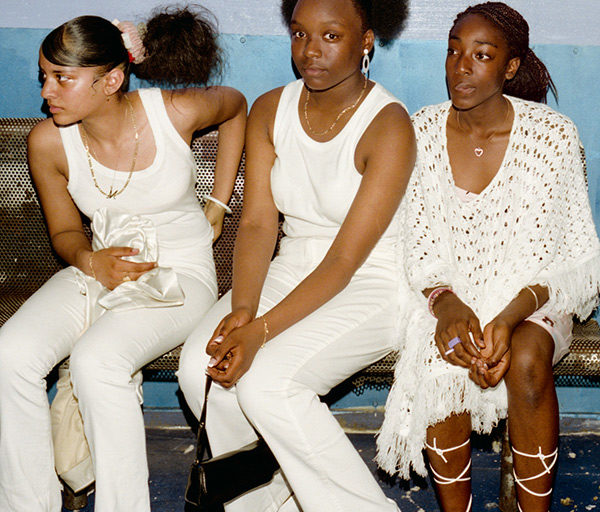Can the Photo-album Hold Cultures Together?
Over the last decade, as artists have turned to the genre of the family portrait, they reflect our ever-expansive notions of belonging.
Liz Johnson Artur, Under 18th Rave, East London, 2004, from Aperture, Winter 2018
Courtesy the artist
Last May, my children discovered my photo-album from college. As they laughed at images of me in my early twenties wearing big twist outs and patterned head wraps, or of their dad with his tight fade and tighter shirts, I realized how unfamiliar to them this intimate object of mine was. For me, each plastic-covered page revealed one or more carefully curated stories from my young adulthood. In contrast, my daughter, who was born in 2012, and my son, born in 2015, saw the album quite differently. For them, it was a random assortment of images and an artifact that offered a glimpse into their parents’ yesteryear.
But that experience was also a rite of passage. As they visited my early adulthood, I flashbacked to my own poring over of my parents’ albums when I was a child in the 1980s. Unbeknownst to me at that time, I was, in fact, participating in an intergenerational ritual that I would later share with my own children: the impromptu celebration of the family archive.

Courtesy the artist
In many ways, my children’s curiosity was part of a larger trend. While the physical photo-album itself seems to have been replaced with Instagram feeds or camera phone folders, it has simultaneously been repurposed. Now, it is less a method to freeze time and more a muse for artists in their own contemporary practices. I imagine this turn is, in part, an intervention into the rise of the selfie as a primary means of personal expression and social-media influence in the 2010s. Lest we forget: Kim Kardashian’s photobook, Selfish, featuring countless selfies of Kardashian traveling, with her family, and in swimsuits, was a New York Times bestseller in 2015.
Rather than compete with spectacle and surplus, contemporary photographers have revived an even earlier form—the portrait—to enact everyday protest.
Whereas the selfie emerged in the last decade as our ultimate symbol in an era of instant access and casual self-importance, the picture album, as a series of either snapshots or collective self-portraits, suddenly felt far humbler and more intimate. Though the Russian Ghanaian photographer Liz Johnson Artur has been documenting the everyday lives of Black immigrants in London, Brooklyn, Kingston, and Accra for more than three decades, the album was the conceit she used when she chose to connect these images together in The Black Balloon Archive, on ongoing series that she began in 1991. Described by Ekow Eshun in the Winter 2018 Aperture as “a family album for the diaspora,” this format enabled Johnson Artur to capture multiple people, periods, and places. Seeing her subjects as “my neighbors,” she visualizes the feeling of Black belonging, offering them a home space in which each can gather together, as Eshun notes, “on one’s own terms.”
Such inclusion was not always guaranteed. In its earliest conception, the family album indicated the wealthy economic status and high social standing of the Victorian-era elite in the 1850s. A hundred years later, photo technology had advanced so much that the baby-boomer generation saw photographs as indispensable. But in today’s world, “What does that same device have to offer the contemporary artist?” as artist Carmen Winant asked in “Into the Album,” her essay that also appeared in the Winter 2018 issue. “In what ways can the family photo-album behave as a kind of confirmation—or assertion—of our very survival, dignity, and existence?”

Courtesy the Kimowan [McLain] Metchewais Collection, NMAI. National Museum of the American Indian Archives Center, Smithsonian Institution
As a contemporary artist herself, Winant ended up turning to Glenn Ligon’s much earlier queering of the family album in A Feast of Scraps (1994–98) and Lorraine O’Grady’s disrupting of linearity in her Miscegenated Family Album (1980/1994) as both radical reclamations of the genre as well as inspirations for Winant’s own feminist practice. Likewise, Jack Halberstam reminds us of the family album as a counter-archive. In his Winter 2017 Aperture essay, “Eric’s Ego Trip,” he writes about the powerful gift that Reed Erickson, a wealthy, white trans man known for his philanthropy, gave to the ONE National Gay & Lesbian Archives, in Los Angeles.
I find optimism in the desire among contemporary artists and scholars to resurrect this family genre. Their considerations of these older photo-albums are not overly sentimental or nostalgic. Instead, they turn to this earlier format to better reflect our ever-expansive notions of gender, race, sexuality, and belonging, and to reject those racially homogenous and heteronormative notions of the American family that continue to thwart us as a nation.
And yet, the 2010s were also the decade of the spectacular. In addition to selfies, there was no shortage of random, often viral, images for us to click, like, or upload. At the same time, such distractions did nothing to ease the grief, and rage, that we felt as we watched unarmed Black people being killed by the police online or played on a twenty-four-hour loop.
In this “information overabundance,” as Fred Ritchin lamented on these pages in the winter of 2012, such excess made it difficult for us “to focus on any one image, or set of images.” In other words, the proliferation of photos and video content ended up minimizing the power of a single picture and its ability to foment activism akin to that of the civil rights and the antiwar movements of the 1960s. Instead, the oversaturation compromised “the credibility and authenticity of photographs that purport to frame the real,” he wrote. In such an age, only the viral video, like the one heroically filmed by seventeen-year-old Darnella Frazier of George Floyd’s murder, has inspired mass protest.

But rather than compete with spectacle and surplus, contemporary photographers have revived an even earlier form—the portrait—to enact everyday protest. Across Aperture issues from this decade, the ordinary is the alternative to oversaturation.
The large-scale portrait is the medium of choice for Farah Al Qasimi, a photographer and native of the United Arab Emirates. Her bright, color-saturated images of people at beauty salons, shopping malls, and traditional pharmacies in her home country have become her signature style and were exhibited in 2020 on one hundred New York bus shelters. “Her Instagram feed is a glorious mix of high art and everyday image inundation,” Kaelen Wilson-Goldie wrote of her work in the magazine’s Winter 2016 issue, “On Feminism.” “And between them, the boundaries are blurred.”
This dissolution between the real and the staged is also a defining trait of four very different artists—Kimowan Metchewais, Zanele Muholi, Buck Ellison, and Tyler Mitchell—whose portraits are revelatory. Though Cree artist Metchewais passed away in 2011, Aperture’s more recent reprisals of his work affirm the power of the small photograph self-portrait to upend longstanding racial stereotypes. His specific use of Polaroid portraits not only afforded him a malleable medium to dissect, rearrange, and then display on large-scale paper but also gave him a “visual sovereignty” that contested the willful erasure of and violence against Indigenous communities by the State. Muholi’s Brave Beauties (2014), on the other hand, is a series of portraits about Black trans women in South Africa that calls attention to the way in which Black queer or lesbian South Africans are vulnerable to gender-based violence. “Today, lesbians in South Africa are brutally murdered,” Muholi told Deborah Willis for Aperture’s Spring 2015 issue, “Queer.” “‘Curative rape’ is used on us. That forces me to redefine what visual activism is.” Muholi adds, “Art needs to be political—or let me say that my art is political. It’s not for show. It’s not for play.”

Courtesy the artist
In contrast, Ellison uses models to re-create those intimate moments among the white elite in which racial and class hierarchies are reinscribed. And by giving us access to the inner worlds of such white privilege, Ellison reveals and gravely reminds us how power is informally yet consistently wielded, even in the prosaic space of a dressing room or family driveway.
And in the decade-ending “Utopia” issue, I had the good fortune of exploring how Mitchell’s aesthetic flips white privilege on its head. He lingers in the imaginative possibilities of Blackness, often capturing his friends and fashion icons from throughout the African diaspora in relaxed settings and in nature. “Inherent to photography, especially when you think of it historically, is a strong hierarchy, where the photographer is the one with all the power, the one who is seeing,” he told me. “And the person being seen has almost no power. So, for me personally as a photographer, I ask myself, ‘What are the things I can do to lessen these inherent hierarchies in the photography-shoot structure of seeing and being seen?’” In his oeuvre, the wide-scale portraits become landscapes in which Black people find a haven, and the ability to rest is rendered as justice.
As for my children, they are now obsessed with the technologies of their age. TikTok, Zoom backgrounds, and iPad screenshots are their preferred forms of self-expression. As I struggle to find a way to store those images, I have begun to print out a select few from my phone and put them in our brand-new photo-albums as a way of safeguarding our memories for the future.
This piece originally appeared in Aperture, issue 248, “The 70th Anniversary Issue,” under the title “Everyday People.”




























